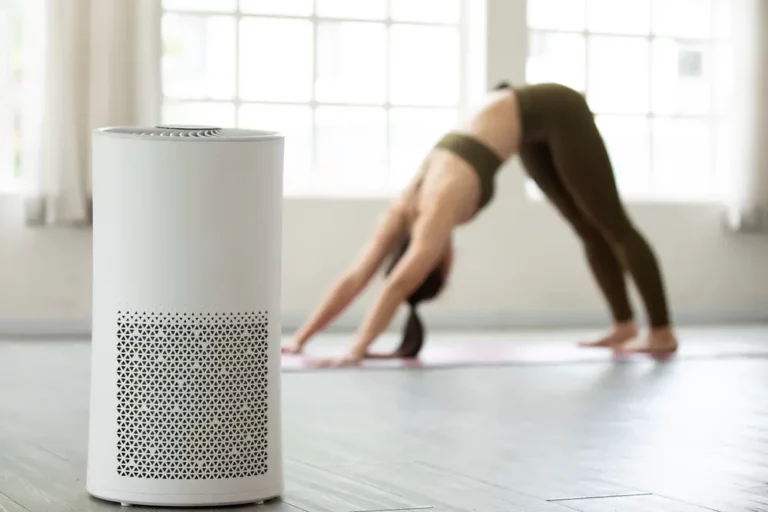Pros And Cons Of Yoga

Yoga has a deep history and is forever growing in popularity for its long list of benefits, but there are downsides to the practice, too. Before you pick yoga as your go-to workout, you should weigh the pros and cons to ensure it’s the right fit for you.
Yoga has many physical benefits, like building muscle and improving cardiovascular health. Yoga also has mental and emotional benefits like stress reduction. On the downside, yoga can be expensive, requires correct postures that are challenging, and can aggravate pre-existing injuries.
Like everything, there are advantages and disadvantages of yoga, and some of them may amaze you! This in-depth look at yoga will explore all aspects to give you a bigger picture of whether yoga is the workout you’ve been looking for or one you should avoid!
The Pros Of Yoga
There’s no doubt that yoga has ample benefits that make it a worthwhile daily practice – ask the hundreds of health influencers who promote it! Some benefits may be obvious, but others are delightfully surprising. This list leaves no stone unturned on how wonderful yoga is for your mind, body, and overall well-being.
Physical Benefits
Builds Strength And Muscle Tone
Thanks to the complexity of yoga poses, your body engages unique muscle groups that build strength and tone up over time. Yoga is a bodyweight exercise that requires you to balance using your muscles. Many exercise enthusiasts incorporate yoga into their routines to enhance leanness and strength.
Improves Flexibility And Mobility
All the stretching in a regular yoga practice doesn’t go unnoticed by your body! You’ll have flexible joints and muscles that make it easier to move around and do other workouts. Practice yoga long enough, and you’ll be able to fold like a pretzel!
Expands Balance And Coordination
In yoga, you connect your mind and body to focus on holding a pose for extended periods. Through this, you improve balance, stability, and posture. You also become more coordinated, thanks to practicing physiological awareness.
Yoga Is Good For Your Cardiovascular Health
Practicing yoga with dynamic poses increases your heart rate and improves cardiovascular health by engaging breathing and blood circulation. One study even showed that yoga helped those with chronic abnormal heart rhythm, known as Atrial fibrillation, experience fewer episodes.
Helps Your Breathing And Lung Capacity
Breathing is an integral part of yoga, called Pranayama. By practicing controlled breathing, you improve respiratory function and increase your lung capacity.
Quick Workout Recovery
A less intense yoga program allows your body to recover quickly, making yoga a safe daily practice! Restorative yoga is also worth considering for your active rest days to stretch your muscles and help them heal from strenuous workouts.
Mental And Emotional Benefits
Provides Stress Relief
If you’re looking for the most relaxing exercise out there, yoga is the perfect fit. Yoga’s controlled breathing and coordinated postures ease the mind and create a true feeling of relaxation, which has been proven to relieve stress.
Connects Your Body And Mind
Yoga is a holistic practice emphasizing a mind-body connection that impacts mental health and well-being. Yoga helps you learn self-awareness and gain profound empathy for your physical and emotional state.
Gives You Clarity And Improves Focus
Mindfulness is part of yoga, which means to focus on the present moment. Since you practice controlling your awareness in yoga, it wiggles through to your everyday life, and you’ll notice improved concentration and mental clarity.
Read my article on Meditation and Yoga Equals Mindful Yoga
Relieves Anxiety And Depression
Some studies show that yoga reduces anxiety and depression symptoms by enhancing relaxation and the release of feel-good neurotransmitters like serotonin.
Yoga Improves Sleep
Like all exercise, yoga helps your body get a quality night’s rest and may even help with insomnia.
Overall Benefits
Weight Management
If your goal is weight loss, yoga isn’t the best choice, but it does increase mindfulness around eating habits and reduce stress-induced overeating. You can practice Vinyasa, Bikram, Hatha, or Ashtanga Yoga to increase calorie burning.
Improves Digestion
Yoga engages your whole body, and specific yoga poses massage your organs, conditioning them to perform better. This means yoga stimulates digestion, alleviates bloating, and promotes a healthy gut.
Increases Energy Levels
Yoga as an exercise facilitates the transport of oxygen and nutrients to your body and improves your cardiovascular system, making your body more efficient, which raises energy levels. Yoga also improves your mentality, which expands the emotional feeling of having energy.
Helps You Make Friends
If you take classes, it’s easy to make friends by bonding over a shared love for yoga!
Wards Off Diseases
One study at Ohio State University shows that yoga decreases the amount of IL-6, an inflammatory protein that causes aging, heart disease, and type-2 diabetes. Yoga also lowers cholesterol and improves blood circulation, which helps combat various conditions, including arthritis, PCOS, and thyroid problems.
If you do not want to do a full-hour class, read my article Are 15 Minutes Of Yoga A Day Enough?
The Cons Of Yoga
It’s hard to believe that yoga has downsides based on how many good things there are to say, but unfortunately, yoga may not be for everyone. Some of these negatives may be deal-breakers, while others are mild inconveniences.
Overall Negatives
Physical Injury Risks
Some yoga poses are complex and can cause injuries by doing the pose wrong or falling! It’s heavily advised that you find a qualified yoga instructor and take a few classes to ensure your posture is correct.If you have any pre-existing injuries, yoga isn’t your best choice, so be sure to ask your medical practitioner first!
Yoga Doesn’t Improve Fitness
Slower-paced yoga doesn’t improve your fitness, and the more physical forms won’t improve it much, either. Yoga is inherently slow and relaxing, and while it builds strength, it will not help fitness.
Can Increase Stroke Risks
There is a slight chance that yoga poses like headstands and shoulder stands could cause a type of stroke called arterial dissection. These strokes are caused by pressure and movement of the neck. Although a stroke isn’t likely, it is still a possibility to be cautious of when doing advanced poses involving your neck.
The Poses Are Difficult
Yoga takes a ton of practice before you can move on to more challenging poses, which is initially daunting. Remember to be patient with yourself!
Finding Qualified Instructors Is Essential
Many people are deeply passionate about yoga and decide to teach classes, but not all are qualified! Be sure to research your teacher beforehand; otherwise, you might be taught wrong.
Yoga Is Expensive
Proper guidance is essential, especially if you are a beginner. Whether you’re going for classes in person or using an app, yoga can rack quite a bill. Yoga classes are typically more expensive than the gym and other exercise classes!
Can Be Disheartening
It takes dedicated practice to get all the yoga poses right over time, and it may be frustrating after months of still not getting it right. Yoga can also become quite repetitive to the point where it becomes boring.
Spiritual Overtones That You May Not Align With
Some yoga practices incorporate spiritual or religious elements that may not resonate with you or cause conflict with your belief system.
Hot Yoga Could Be Bad For You
Hot yoga, known as Bikram Yoga, is a yogic exercise practiced in humid conditions such as a heated room. Hot yoga causes risks of dizziness, exhaustion, dehydration, and fatigue, so do be careful!
Learn More!!! How To Create A Yoga Routine In 8 Steps and Can Yoga Release Toxins That Make You Feel Sick?
Wrap Up
It’s easy to see that the pros outweigh the cons of yoga! Although the negatives can be pretty serious, as long as you’re cautious and patient, most can be avoided. Make sure to take it easy in yoga, work your way up to advanced poses, and rely on qualified instructors to get you where you want to be.






